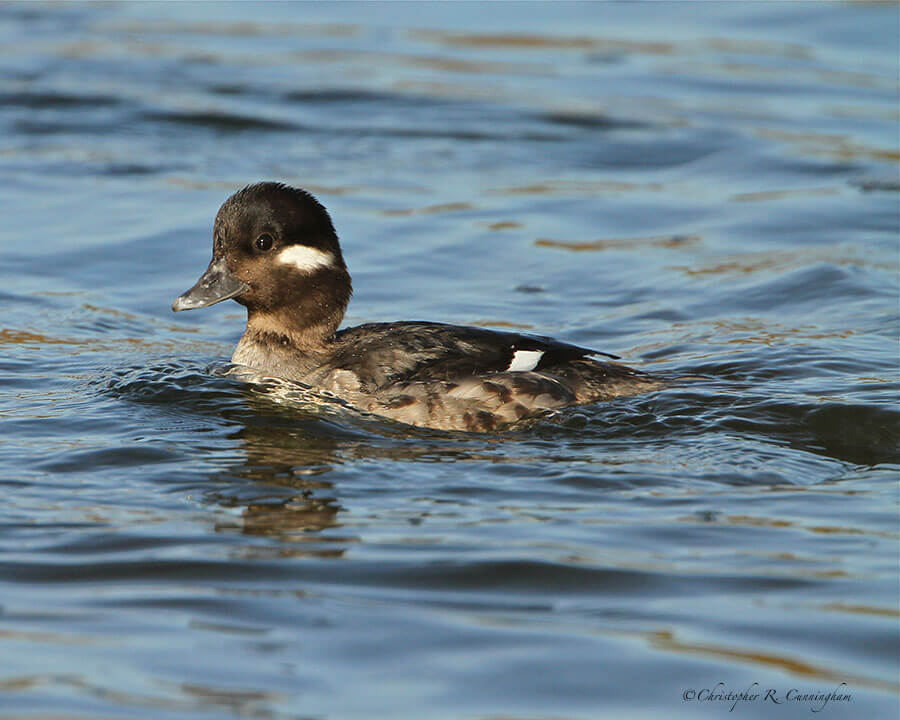
We recently spent three days birding with friends along the Coastal Bend, a great place to practice the art of tracking swimming/paddling birds. Some of the less timid species of ducks and other waterbirds will sit calmly on the surface of the water as a photographer approaches. Most species, though, will slowly begin to paddle away as humans approach. Some, like Buffleheads, will make a bee-line to the opposite shore! It’s easy to tell photos of paddling birds from those of stationary ones: a v-shaped wake spreads out behind the paddlers, whereas stationary floating birds are generally surrounded by a smooth surface or ring-shaped ripples. There is no question about it–the latter is much easier to capture.

For paddling birds, I utilize a technique similar to the one I use to capture birds in flight. With tripod set as low as practicable given vegetation along the shore, and IS set to Mode 2, I pan as smoothly as possible snapping images along the way. A moving target means changing optical conditions–which means that frequent chimping (checking images) and tinkering with exposure compensation are often necessary. While not as technically challenging as capturing birds in flight, there is considerable satisfaction in getting great shots of swimming birds, even though probably not one viewer in hundreds looks closely enough to perceive the
difference . . . But I know it took a bit of extra effort to get the shot!

© 2013 Christopher R. Cunningham. All rights reserved. No text or images may be duplicated or distributed without permission.